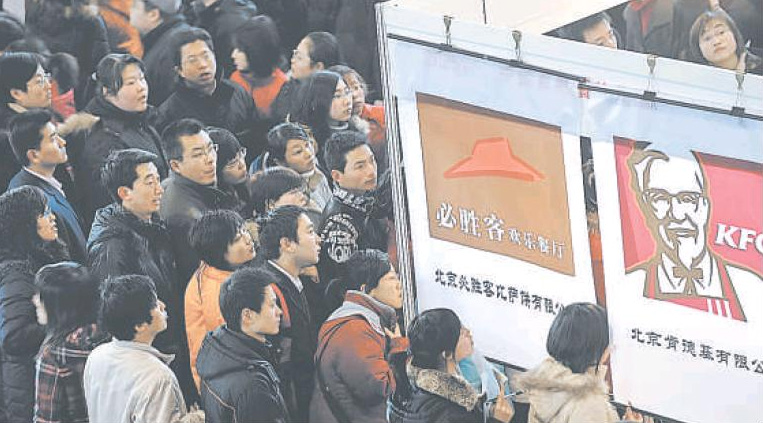Jefferson Graham
USA Today
Veoh aims to be one-stop shop for Net TV viewers
LOS ANGELES – Dmitry Shapiro wanted to start a website that promised to be the CBS, NBC and ABC of the Internet, a one-stop shop for TV programming on the Web.
Shapiro wasn’t the first to come up with such a lofty concept. At the time of his brainstorm, 2005, many others had similar notions. Shapiro’s Veoh competes with YouTube, (GOOG) Fancast, (CMCSA) Joost, Blip.TV and at least 250 other video websites, according to researcher the Yankee Group.
But former Disney (DIS) CEO Michael Eisner thought Shapiro was onto something. So did two former top Viacom (VIAB) executives, Jonathan Dolgen and Tom Freston. They’ve all invested in Veoh, which has quietly become the top independent U.S. video site on the Internet, attracting 2.1 million visitors a month, according to Nielsen Online.
“Companies like AOL, (TWX) Yahoo (YHOO) and Google (GOOG) have all defined a space,” says Eisner, who now runs the Tornante investment firm. Google-owned YouTube aside, he says, “I think Veoh has the potential to define the space. They want to marry the Internet to the TV set, and that’s the real deal.”
While YouTube specializes mostly in amateur video clips, Veoh showcases both homemade clips and full-length TV shows. CBS (CBS) has many of its prime-time shows on Veoh, as do NBC (GE) and Fox, (NWS) via their Hulu joint venture. There’s also programming from PBS. Next month, Viacom’s cable networks, which include MTV and Comedy Central, will join the stable.
“Our goal is to give consumers the broadest collection of video available anywhere,” Shapiro says.
A key selling point for Veoh, Yankee Group analyst Anton Denissov says, is a download feature that lets you save shows to watch later. The Veoh TV application aggregates full-length shows from all over the Web and lets you save them if downloading is an option.
Shapiro says that once you connect your computer to a television, Veoh TV can act as a TiVo-like guide. For now, download availability tends mostly to be made-for-the-Web productions such as Goodnight Burbank and Prom Queen. So far, CBS, Viacom, NBC and Fox aren’t offering downloads of their TV shows, but PBS and the Time Warner-owned Cartoon Network are.
Yankee says the average consumer watches about five minutes of Internet video a day. That’s projected to jump to 45 minutes a day by 2011.
Dolgen, a former top executive at the 20th Century Fox, Paramount and Columbia (SNE) movie studios, says what attracted him to Veoh was the “one-stop shop” concept. “Back in the old days, you had to turn on three TV sets to see everything from CBS, ABC and NBC,” he says.
Quincy Smith, who runs CBS’ new media division, says the size of the audiences on Veoh are getting close to what some shows are receiving on broadcast television. While he declined to cite specifics, he said the post-apocalyptic drama Jericho has a bigger online audience than it does on traditional TV.
Veoh says its most-viewed TV show is Fox’s Family Guy, which attracted 200,000 viewers, but that pales next to Prom Queen, a made-for-the-Internet production from Eisner’s Vuguru production company. The debut last summer attracted 1.2 million viewers, Veoh says.
Family Guy isn’t even hosted on Veoh. The website picks it up from Hulu, the NBC/Fox joint venture that puts their shows on many websites. Much of the content on Veoh is found elsewhere on the Web, but viewable on Veoh TV.
Veoh showcases videos in higher resolution than competing sites such as YouTube. The service uses peer-to-peer technology, the same concept that put the original Napster (NAPS) on the map – tapping into its users’ computers to broadcast higher-quality video. Still, it’s far from high-definition. Ads surround most shows.
Pitching Eisner
Shapiro, a Russian immigrant who moved to Atlanta at age 10 and worked in the cellular industry after graduating from Georgia Tech, got the idea for Veoh while on his honeymoon. At the time, he was running a software security company he’d founded in San Diego. His first successful sales call for Veoh was with Art Bilger, who runs Los Angeles-based Shelter Capital. He agreed to invest $2.25 million and helped open the door to other investors. All told, some $40 million was raised, and Bilger owns 25% of the company.
“Dmitry had a good vision, and a great ability to actually explain it to people with far less sophistication,” Bilger says. “To be able to communicate was very important.”
Shapiro’s title is chief innovation officer, while the CEO mantle has been handed to an experienced manager, Steve Mitgang, a former Yahoo senior vice president.
Since joining in July 2007, “We’ve gone from having no monetization to having dozens of really happy advertisers,” Mitgang says.
Veoh is currently unprofitable, but the big backers involved expect that to change in the near future.
Eisner is one of the biggest names in Hollywood. How did a guy from Russia with a penchant for loud T-shirts and jeans with odd pockets end up getting in the door to see him?
“He called me,” Shapiro says. “It was the most amazing thing. He saw the site and liked it.”
Eisner invited him to visit at his Bel Air mansion, where Shapiro made his pitch. Eisner was impressed. “They were taking this technology created for illegal uses of expanding copyright, and turned into a legal business, which I thought was brilliant,” Eisner says. “I figured they’re either going all the way, or will be over in 10 minutes. And ‘all the way’ seems to be where they’re headed.”



